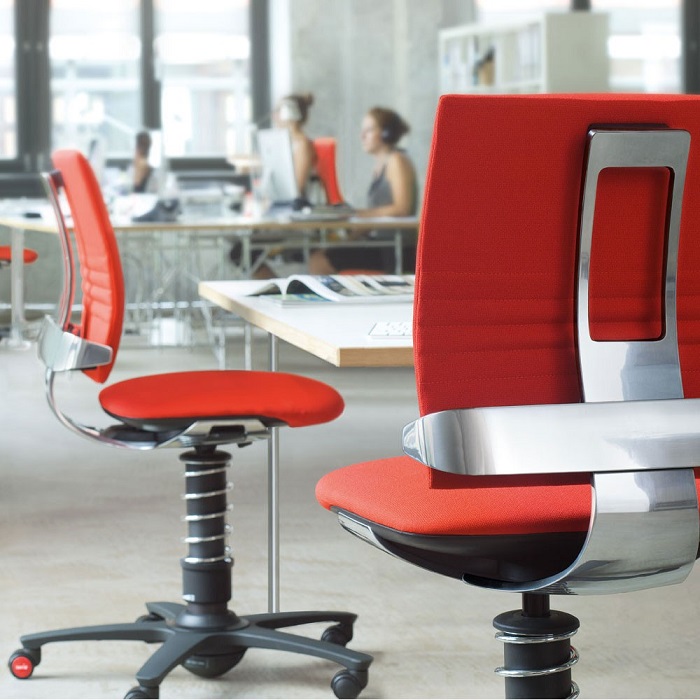A lot of people with sedentary jobs experience discomfort, and ultimately pain, all over their body, which is to be expected as we humans were not programmed to sit for too long…until this became the norm not that long ago. That being said, physicians, therapists, scientists, and furniture designers from all over the world have put in a lot of effort into finding ways to relieve this kind of pain and discomfort.

The term “ergonomic furniture” is getting thrown around far too much nowadays, and it doesn’t mean that ergonomic furniture permits you to sit for a dozen hours without any consequences. It’s suggested that for every hour you spend sitting down, you should spend at least 5 minutes standing. Understandably, that’s not always possible, but worry not, there’s an ingenious solution as of recently – the active office chair.
I realize that the words “active” and “chair” usually don’t go together, but active seating has been a thing for a while now in one form or another. For instance, people have combined desks and treadmills, and while that does keep you active, it’s not actually sitting. The active office chair is the ideal alternative to stationary sitting and it has many benefits.
For starters, it encourages motion. Our bodies are designed to be on the move, so even micro-movements which are encouraged by active seating keeps your joints lubricated and your fluids circulating. Additionally, you’ll feel more engaged and limber when you move your body when you work. The engagement of your core muscles requires attention, so you’ll have to mind your posture.
I realize that this sounds counter-productive to your job, and that might be the case for the first couple of days until you get used to the active chair. However, once you get it down to a T, it will become a second nature to you, and you’ll improve your posture while sitting.
To summarize, most active chairs encourage you to adopt a good ergonomic position. However, there are still some ergonomic features that you need to factor in as you start using active chairs. Their instability makes them extremely core-engaging, which can make sitting on them for beginners somewhat challenging. You should still adjust the seat to a proper height so that you can look at your monitor at eye-level without spraining your neck, and so you can type on your keyboard without bending your wrists. Lastly, while the active chair can mitigate the risk of “sitting diseases”, you should still remember to take regular breaks to walk or stretch at least every hour.



